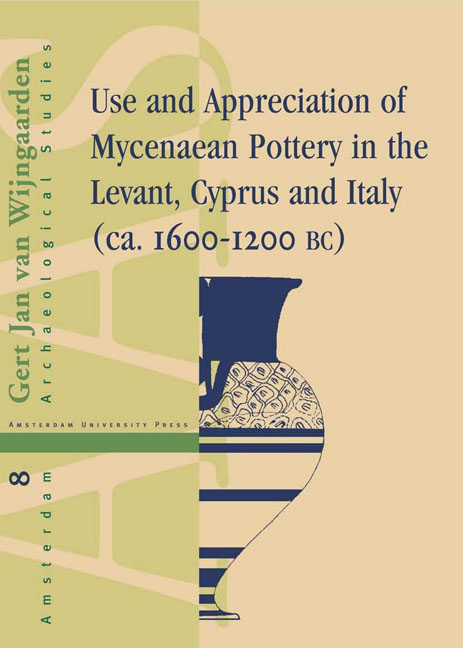11 - Athienou-Bamboulari tis Koukouninas
Published online by Cambridge University Press: 10 February 2021
Summary
INTRODUCTION
In the central part of Cyprus, the Mesaoria plain is bordered on its southern side by limestone hills. Athienou is situated in the foothills, in close proximity of both the central plain and mining districts such as Troulli or Sha. The site of Bamboulari tis Koukouninas is situated on a natural hillock, which rises some 2 m above its surroundings. It covers some 2500 sqm which have been excavated down to virgin soil for more than 90% (Fig. 11.1). The lowest archaeological layers which have been attested during these excavations have been assigned to the transitional period MC III-LC I. From then on, the site was continually occupied until the first part of LC III.
The Late Bronze Age remains have been discovered in three strata (strata IV-II). In stratum IV (MC III-LC I), only a few deep and shallow pits were discovered; they did not contain any Mycenaean pottery. Some of the remains in stratum III may have an LC I date, but the majority date to LC II. Architectural remains belonging to this phase have been found in the north-western part of the site only (Fig. 11.1). One building has been discovered with a large room, possessing a plaster floor. At least two other rooms, also with a plaster floor, belonged to this building as well. South of these three rooms, a courtyard has been discovered. Three pits dug were dug in the pavement of the courtyard. Directly east of the courtyard, there were three deep, cylindrical pits; a group of pits further east were more shallow. During LC III, the building was enlarged with several rooms in the eastern part of the site. Other constructions, mainly to do with metal working, also date to this period.
The total number of miniature juglets which have been found in stratum III at Athienou- Bamboulari tis Koukouninas has been estimated at 10,000. Consequently, the site has been interpreted as a sanctuary, which formed a regional centre in networks of production and exchange. Associated with the cultic activities was metal production, as is indicated by copper ore and nodules. No other settlement remains have been discovered in the vicinity of the site, but the nearby cemetery reportedly has Late Bronze Age graves. It is unclear who controlled the sanctuary.
- Type
- Chapter
- Information
- Use and Appreciation of Mycenaean Potteryin the Levant, Cyprus and Italy (1600-120O BC), pp. 161 - 168Publisher: Amsterdam University PressPrint publication year: 2002



